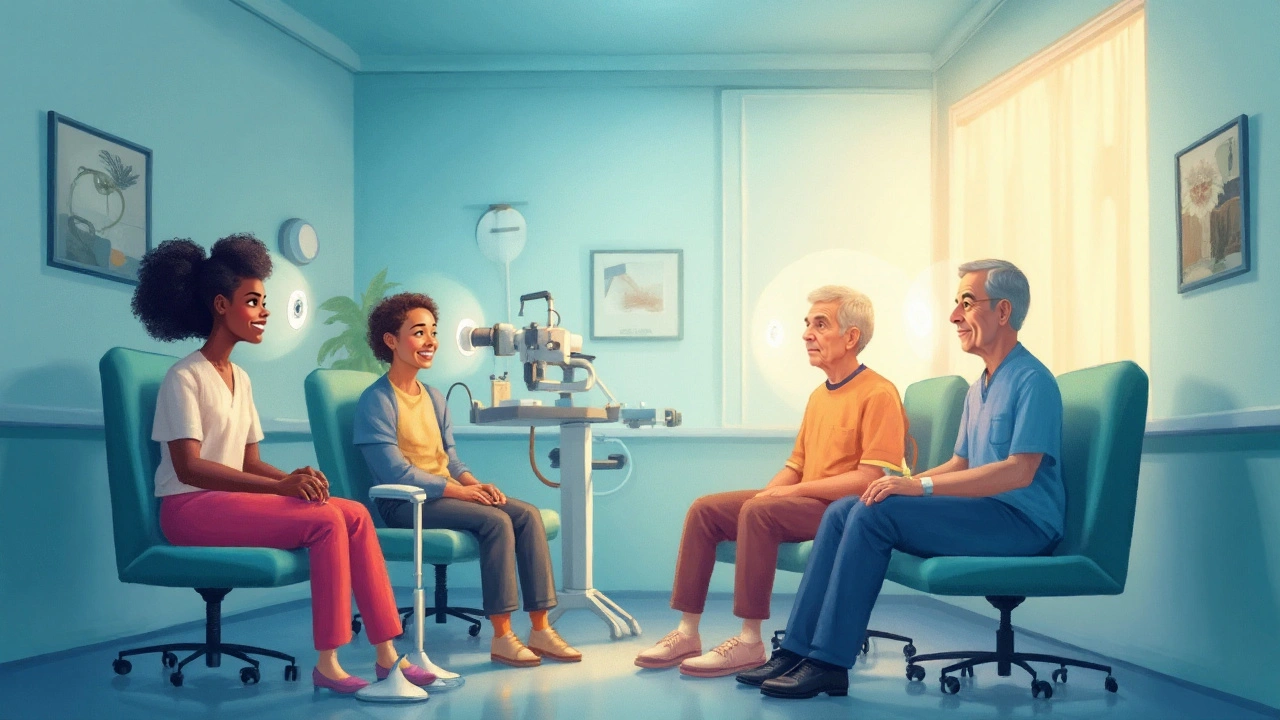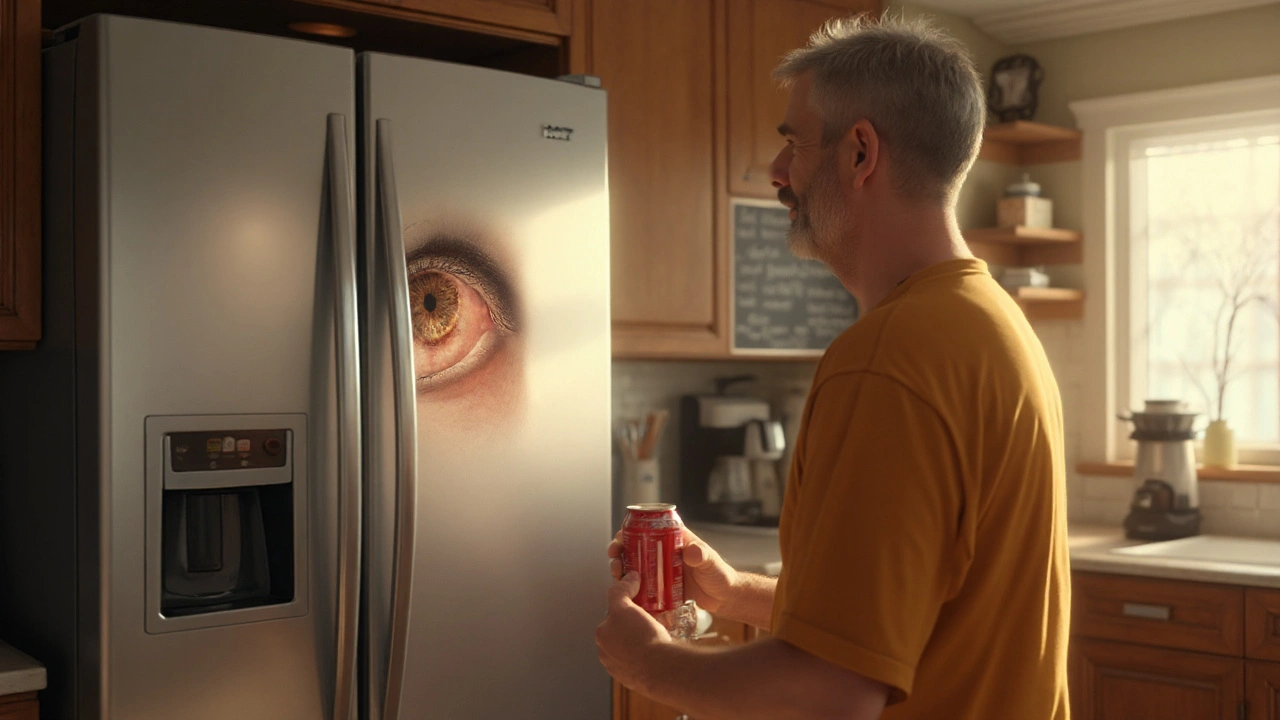Uric Acid Vision Risk Calculator
Gout is a metabolic disorder characterized by sudden, painful joint inflammation caused by crystallised uric acid deposits. While most people associate gout with big toe attacks, the excess uric acid that triggers those flare‑ups can also linger in the bloodstream, with subtle consequences for the eyes.
Understanding Uric Acid and Hyperuricemia
Uric Acid is a waste product formed when the body breaks down purines - natural compounds found in foods like red meat, seafood, and beer. Normally kidneys filter uric acid into urine, keeping blood levels in check. When filtration falters or production spikes, hyperuricemia develops, raising the risk of crystal formation.
Studies from the Australian Kidney Foundation show that about 30% of people with sustained hyperuricemia develop gout, and a similar proportion experience extra‑articular manifestations, including eye problems.
Why the Eyes Matter in Gout
The eye is a delicate, highly vascular organ. Blood vessels delivering nutrients and removing waste are especially sensitive to inflammatory chemicals. When uric acid crystals circulate, they can lodge in tiny ocular vessels, prompting local inflammation.
Three main eye conditions have been linked to gout:
- Uveitis - inflammation of the uveal tract (iris, ciliary body, choroid).
- Glaucoma - progressive optic nerve damage often tied to elevated intra‑ocular pressure.
- Cataract - clouding of the lens that can accelerate with chronic inflammation.
Direct Ocular Effects of Gout
Uveitis can appear suddenly, causing red eye, pain, light sensitivity, and blurred vision. In gout patients, the inflammatory response is driven by immune cells reacting to urate crystals that settle in the uveal tissue. A 2022 Australian ophthalmology cohort reported that 8% of gout sufferers experienced at least one uveitis episode over five years.
Glaucoma risk rises because uric acid may impair the trabecular meshwork - the drainage system for aqueous humour. Reduced outflow raises intra‑ocular pressure, a key risk factor for optic nerve damage. A longitudinal study in the US found gout patients had a 1.6‑fold higher incidence of primary open‑angle glaucoma compared with age‑matched controls.
Cataract formation is accelerated by chronic low‑grade inflammation, which alters lens protein structure. While age remains the predominant cause, people with long‑standing hyperuricemia develop noticeable lens opacities 3-5 years earlier on average.
| Condition | Link Strength to Gout | Typical Symptoms | Recommended Screening |
|---|---|---|---|
| Uveitis | Strong (8% prevalence in gout cohorts) | Redness, pain, photophobia, blurred vision | Dilated eye exam at gout diagnosis, then annually |
| Glaucoma | Moderate (1.6× risk) | Peripheral vision loss, halos around lights | Tonometry and optic‑nerve OCT every 2years |
| Cataract | Weak‑moderate (earlier onset) | Glare, decreased night vision, clouded view | Slit‑lamp check during routine eye visit |

Indirect Pathways: Kidneys, Inflammation, and Medications
Gout often co‑exists with kidney stones, another uric‑acid‑related problem. Kidney dysfunction reduces uric acid clearance, feeding a vicious cycle that heightens systemic inflammation. Chronic inflammation releases cytokines (IL‑1β, TNF‑α) that can damage retinal vessels, increasing the risk of diabetic‑like retinopathy even in non‑diabetic patients.
Medications used to control gout can also impact eye health. Colchicine is an anti‑inflammatory drug that, in rare cases, causes visual disturbances such as blurred vision or photophobia. Allopurinol lowers uric‑acid production, but a small percentage of users report rash or hypersensitivity that may involve the eyes.
Protecting Your Vision While Managing Gout
Here are practical steps to keep both joints and eyes in good shape:
- Control uric‑acid levels: Aim for serum uric acid < 6mg/dL (0.36mmol/L). Regular blood tests help track progress.
- Adopt a low‑purine diet: Limit red meat, organ meats, shellfish, and sugary drinks. Favor dairy, cherries, and plenty of water (2-3L daily).
- Maintain a healthy weight: Every kilogram lost can reduce uric‑acid production by 0.3mg/dL.
- Use medication wisely: Start urate‑lowering therapy (e.g., allopurinol) at low doses, titrating up under doctor supervision to avoid sudden uric‑acid spikes.
- Schedule regular eye exams: Once you’re diagnosed with gout, book a comprehensive dilated exam within six months, then yearly or as recommended.
- Watch for warning signs: Sudden eye pain, redness, halos, or a rapid decline in sharpness should trigger an urgent ophthalmology visit.
By treating gout aggressively, you reduce the concentration of circulating uric acid, which in turn lessens the chance of crystal deposition in ocular tissues.
When to Seek Immediate Eye Care
If you experience any of the following, treat it as an eye emergency:
- Severe, throbbing eye pain that doesn’t improve with over‑the‑counter analgesics.
- Rapid vision loss or new floaters.
- Persistent red eye with light sensitivity for more than 24hours.
- Sudden onset of halos around lights, suggesting pressure spikes.
Prompt treatment can prevent permanent damage, especially in gout‑related uveitis where steroids or anti‑TNF agents may be needed.
Key Takeaways
- Gout isn’t just a joint disease; excess uric acid can affect the eyes.
- Uveitis, glaucoma, and earlier cataract formation are the main ocular risks.
- Controlling serum uric acid, a balanced diet, and regular eye checks are essential prevention tools.
- Stay alert for eye‑related warning signs and act quickly.

Frequently Asked Questions
Can gout cause permanent eye damage?
Yes, if untreated gout leads to repeated uveitis attacks or sustained high intra‑ocular pressure, it can scar the iris, damage the optic nerve, or accelerate cataract formation. Early management dramatically lowers this risk.
Is there a direct test for uric‑acid‑related eye disease?
No single test isolates uric‑acid‑induced eye disease. Doctors combine serum uric‑acid measurements with a detailed eye exam (slit‑lamp, OCT, tonometry) to spot inflammation or pressure changes that may be linked to gout.
Do gout medications like allopurinol protect the eyes?
Allopurinol itself does not directly protect ocular tissue, but by lowering uric‑acid levels it removes the primary trigger for crystal‑induced inflammation. The downstream effect is a lower chance of eye complications.
Should I get a special eye exam if I have gout?
A comprehensive dilated examination is advisable at diagnosis, followed by yearly checks. If you have a history of uveitis or glaucoma, more frequent monitoring (every 6-12 months) may be recommended.
Can lifestyle changes alone keep my eyes safe from gout?
Lifestyle measures - low‑purine diet, weight loss, and hydration - can dramatically lower uric‑acid levels and often reduce the need for medication. However, most patients still require urate‑lowering drugs to maintain safe serum levels, especially once gout is established.


allison hill
While the article presents a plausible link between uric acid and ocular health, one must consider the potential hidden agenda of pharmaceutical companies promoting expensive eye‑drop regimens. The data cited seems cherry‑picked, ignoring studies that show no correlation. Moreover, the calculator’s algorithm lacks transparency, which should raise suspicion.